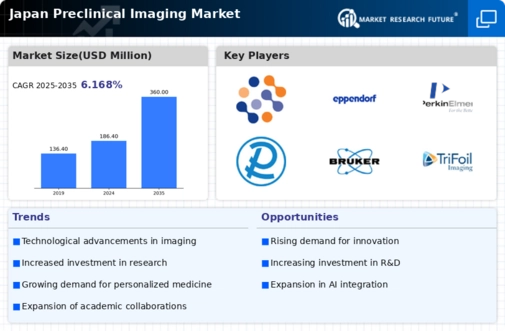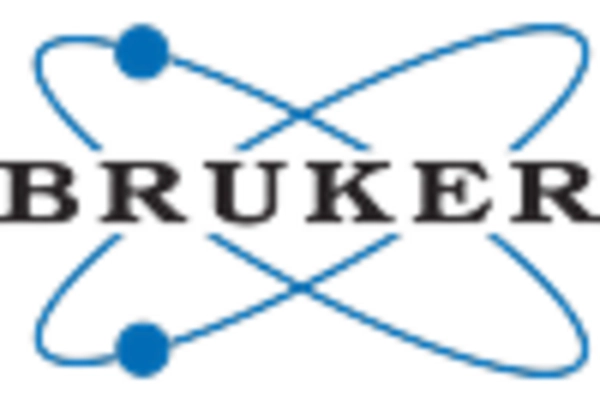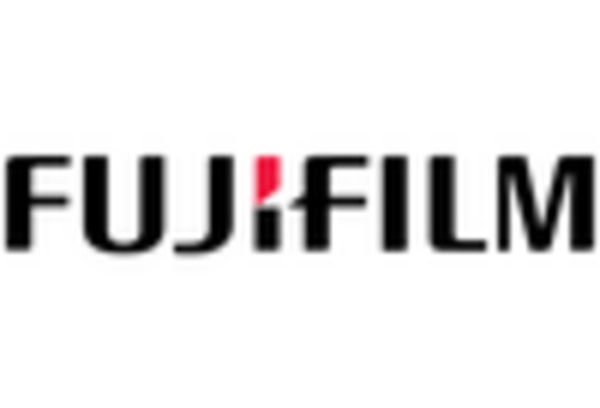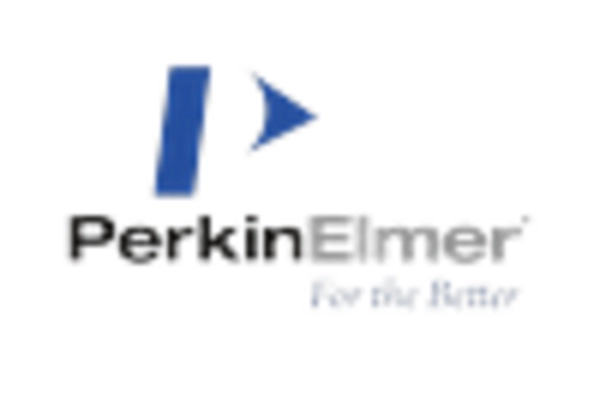Supportive Regulatory Environment
The regulatory environment in Japan plays a crucial role in shaping the preclinical imaging market. Authorities are increasingly recognizing the importance of imaging in the drug development process, leading to streamlined approval pathways for imaging technologies. This supportive stance encourages innovation and investment in the preclinical imaging sector. Regulatory bodies are also promoting guidelines that emphasize the use of advanced imaging techniques to enhance the quality of preclinical studies. As a result, the preclinical imaging market is likely to benefit from a more favorable regulatory landscape, which could facilitate the introduction of new imaging modalities and technologies, ultimately enhancing research outcomes.
Advancements in Imaging Technologies
Technological advancements are a key driver of the preclinical imaging market in Japan. Innovations in imaging modalities, such as high-resolution MRI and advanced optical imaging techniques, are enhancing the capabilities of researchers. These advancements allow for more detailed visualization of biological processes, which is essential for understanding disease progression and treatment effects. The market is witnessing a shift towards hybrid imaging systems that combine multiple modalities, providing comprehensive data for preclinical studies. As these technologies continue to evolve, they are likely to attract further investment and interest from both academic and industrial sectors, thereby propelling the growth of the preclinical imaging market.
Growing Focus on Personalized Medicine
The preclinical imaging market in Japan is increasingly influenced by the growing focus on personalized medicine. As healthcare shifts towards tailored treatments, the need for precise imaging techniques that can assess individual responses to therapies becomes paramount. This trend is particularly evident in oncology, where imaging is utilized to monitor tumor responses to targeted therapies. The market is expected to witness a CAGR of around 7% as researchers and clinicians seek to integrate imaging data into personalized treatment plans. This emphasis on individualized care not only enhances patient outcomes but also drives innovation within the preclinical imaging market, as new technologies are developed to meet these specific needs.
Increased Investment in Drug Development
Japan's preclinical imaging market benefits from heightened investment in drug development initiatives. Pharmaceutical companies are allocating substantial resources to research and development, with spending reaching approximately $10 billion annually. This investment is crucial for the discovery of new therapeutics, particularly in oncology and neurology, where imaging plays a pivotal role in understanding disease mechanisms. The integration of imaging technologies in preclinical studies allows for better assessment of drug efficacy and safety, thereby streamlining the development process. Consequently, the preclinical imaging market is poised for growth as companies seek to leverage advanced imaging techniques to enhance their drug development pipelines.
Rising Demand for Non-Invasive Techniques
The preclinical imaging market in Japan experiences a notable surge in demand for non-invasive imaging techniques. Researchers and pharmaceutical companies increasingly prefer methods that minimize animal suffering while providing accurate data. This shift is driven by ethical considerations and regulatory pressures, as well as the need for reproducible results. The market for non-invasive imaging modalities, such as MRI and PET, is projected to grow at a CAGR of approximately 8% over the next five years. This growth reflects a broader trend towards humane research practices, which is likely to enhance the reputation of institutions involved in preclinical studies. As a result, the preclinical imaging market is expected to expand significantly, driven by the adoption of these advanced imaging technologies.

















Leave a Comment